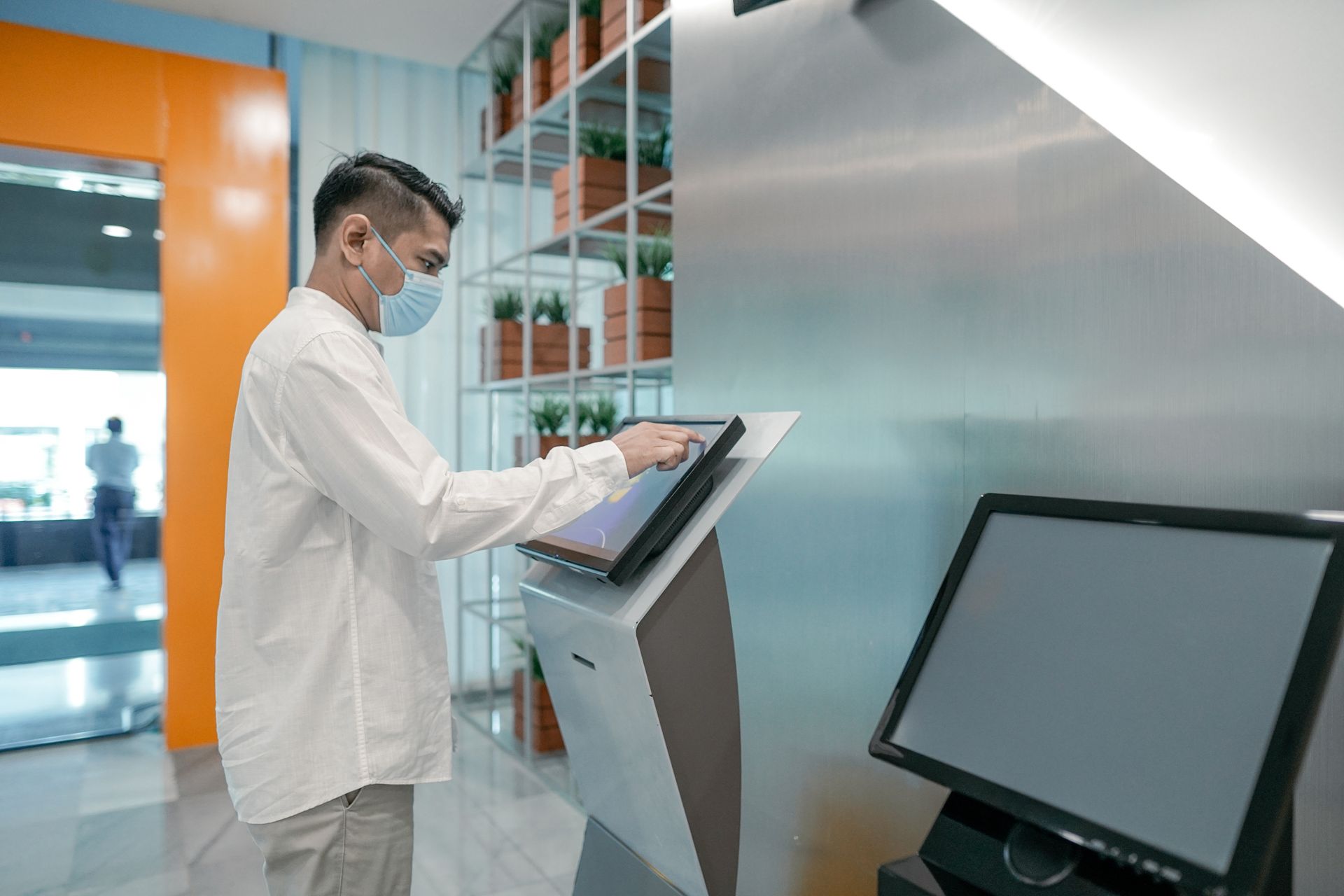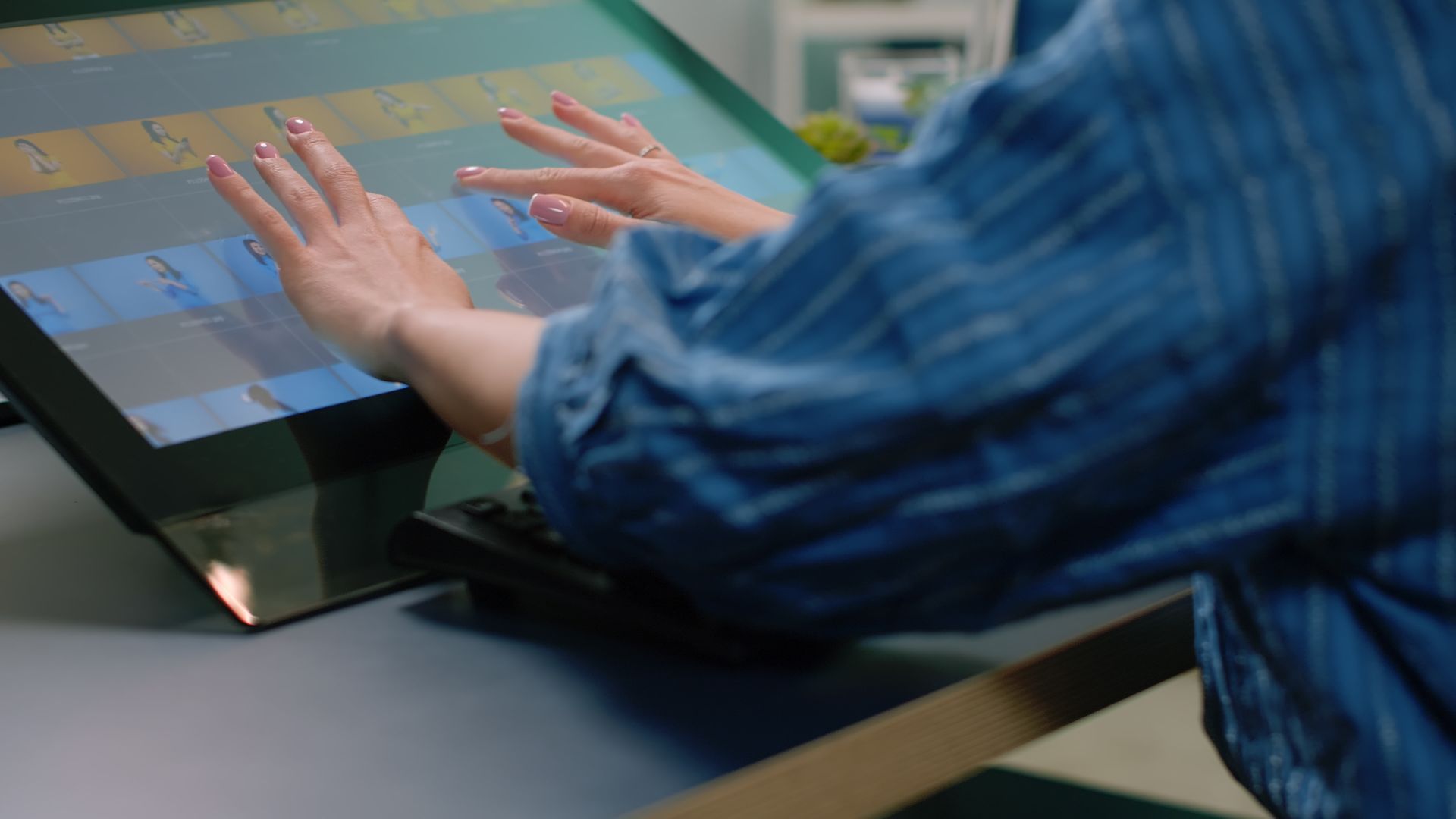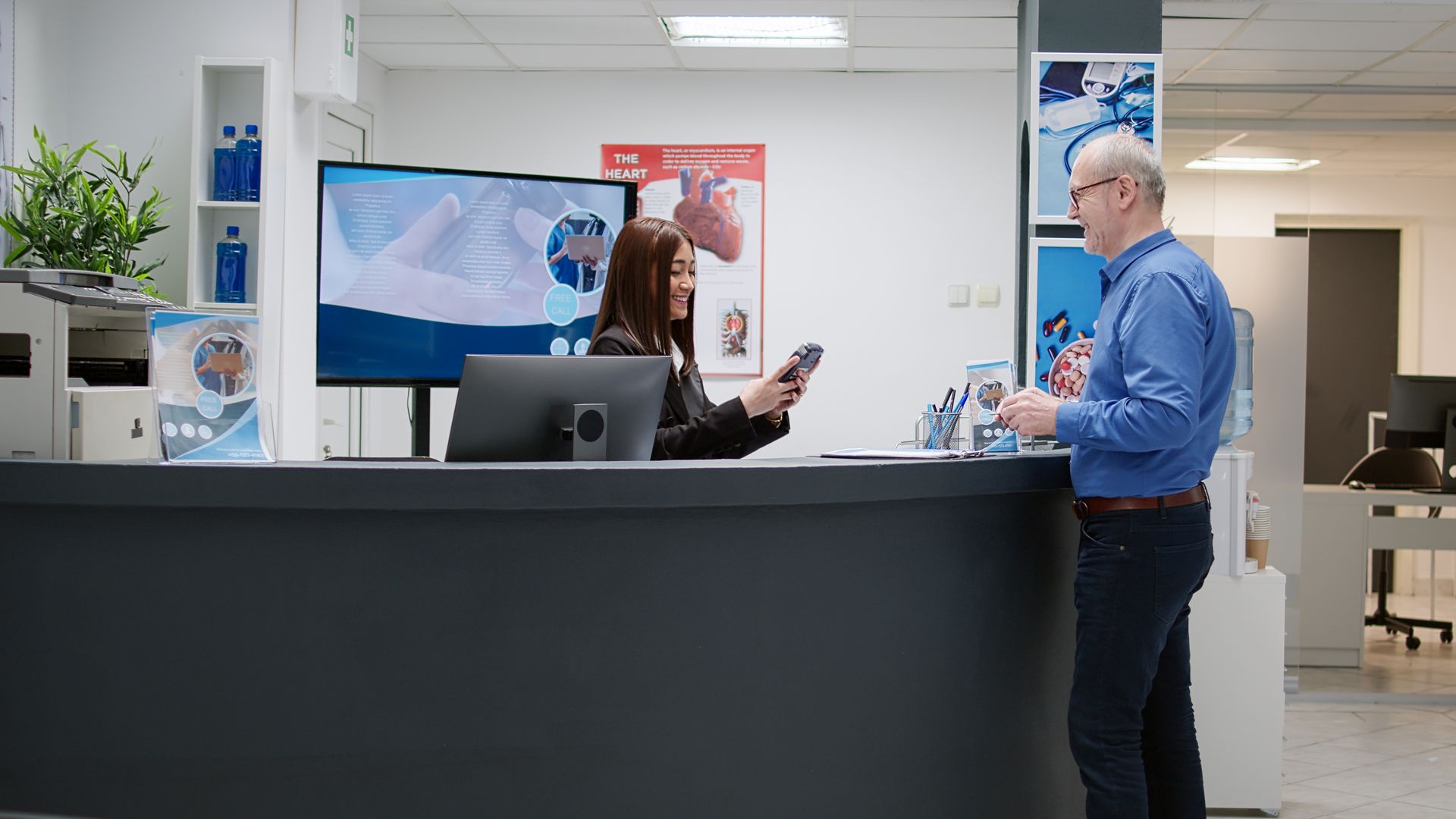How Visitor Management Systems Reduce Administrative Burdens in Healthcare Facilities

In fast-paced healthcare facilities, balancing visitor control with administrative efficiency is a common challenge. Visitor management systems (VMS) streamline visitor control, from check-in processes to compliance and security, particularly in healthcare settings where regulatory standards are high. With healthcare sectors in Saudi Arabia and the UAE rapidly evolving to meet modern demands, VMS technology has become indispensable. In this article, we explore how visitor management systems reduce administrative burdens, enhance compliance, and support patient care in healthcare environments.
Understanding Visitor Management in Healthcare
Definition and Functions of Visitor Management Systems in Medical Settings
Visitor management systems are digital tools designed to manage and monitor visitors within a facility. In healthcare, these systems serve functions like automated check-in, real-time tracking, visitor authentication, and compliance support. This goes beyond typical sectors as healthcare facilities have distinct requirements for patient safety, privacy, and regulatory compliance.
How Visitor Management Differs in Healthcare Compared to Other Sectors
Unlike visitor management in corporate settings, healthcare visitor management emphasizes patient confidentiality, infection control, and access to sensitive areas like intensive care units (ICUs). A healthcare visitor management system integrates stringent security, access control, and regulatory adherence, addressing specific healthcare needs and protecting patients and staff.
Key Administrative Challenges in Healthcare Facilities
Common Administrative Challenges in Hospitals and Clinics
Healthcare facilities face unique administrative challenges, such as handling high visitor volumes, maintaining accurate records, ensuring regulatory compliance, and managing staff resources. Without proper systems, these challenges increase the workload for administrative staff, leading to inefficiencies and potential errors in visitor tracking.
The Impact of High Visitor Volume on Healthcare Staff and Resources
In busy healthcare settings, high visitor traffic can disrupt workflows and consume staff time, affecting overall patient care. Administrative staff often manage manual sign-ins, health screenings, and security checks, tasks that divert their attention from core responsibilities. Digital visitor management systems help alleviate this burden by automating these processes.
Benefits of Visitor Management Systems for Healthcare Administration
Overview of How Digital Systems Streamline Administrative Workflows
Digital visitor management systems streamline healthcare administration by automating visitor registration, check-in, record-keeping, and compliance processes. By handling visitor data efficiently, these systems reduce administrative workloads, allowing staff to focus on critical patient services rather than visitor handling.
Key Benefits Specific to Healthcare Environments
Visitor management systems bring multiple benefits to healthcare settings, including increased security, compliance support, and operational efficiency. They support administrative staff by minimizing manual tasks, reducing front-desk congestion, and providing real-time visibility on visitor status and location within the facility.
Enhanced Patient Safety and Visitor Tracking
How Visitor Management Helps Maintain Patient Confidentiality and Safety
Visitor management systems play a crucial role in upholding patient confidentiality by ensuring that only authorized individuals gain access to sensitive areas. This is especially important in regions like Saudi Arabia and the UAE, where healthcare regulations prioritize patient data protection and safety. By restricting access, VMS solutions help mitigate security risks.
Benefits of Real-Time Tracking for Patient and Visitor Security
Real-time tracking features enable healthcare facilities to monitor the movements of visitors and prevent unauthorized access. In healthcare, where maintaining a secure environment is vital, these features enhance patient safety and visitor control while supporting efficient emergency responses if needed.
Automated Check-In Processes for Healthcare Visitors
Streamlining the Check-In Process with Automated Kiosks
With automated kiosks, healthcare visitor management systems make check-ins faster and more efficient. Visitors can sign in using digital kiosks or mobile apps, providing necessary information and undergoing security screenings seamlessly. This improves visitor flow and reduces wait times, which is essential in high-traffic healthcare environments.
Reducing Front-Desk Congestion and Wait Times in Healthcare Settings
Front-desk congestion is a significant issue in hospitals and clinics, especially during peak hours. Visitor management systems reduce the burden on administrative staff by automating check-ins and allowing visitors to proceed to designated areas directly, enhancing overall facility efficiency and the visitor experience.
Reducing Paperwork and Manual Record-Keeping
How Digital Visitor Logs Minimize Paperwork and Human Error
By replacing manual sign-in sheets with digital logs, visitor management systems reduce paperwork and the risk of human error. Digital logs automatically capture visitor details, store them securely, and make retrieval easy, thereby supporting healthcare facilities in creating a reliable and efficient visitor management process.
Compliance Benefits of Automated Record-Keeping in Healthcare Facilities
Automated record-keeping helps healthcare facilities comply with stringent regulations in the UAE and Saudi Arabia. Visitor management systems enable real-time documentation and audit-ready records, making it easier for healthcare facilities to adhere to regional regulatory requirements and facilitate inspections and audits.
Improving Compliance with Health Regulations
Importance of Compliance with Regional Healthcare Regulations in the UAE and Saudi Arabia
Healthcare facilities in the UAE and Saudi Arabia are subject to strict health regulations. Visitor management systems offer features that help facilities meet regulatory requirements, such as data security, access control, and record maintenance. This ensures healthcare providers can focus on patient care while meeting compliance standards.
How Visitor Management Systems Aid in Compliance and Audits
Visitor management systems support healthcare facilities in staying audit-ready by providing digital records of visitor interactions, access history, and security checks. This data is crucial for healthcare facilities to meet regulatory requirements and streamline audit processes, especially in regulated environments.
Emergency Management and Response Efficiency
How Visitor Management Systems Enhance Response During Emergencies
In the event of an emergency, having accurate, real-time data about who is in the facility becomes invaluable. Visitor management systems provide healthcare facilities with instant access to visitor information, including locations within the building, to aid emergency response teams in quickly evacuating or securing areas as needed. This real-time data helps optimize response time, ensuring safety for everyone involved.
Benefits of Real-Time Visitor Data for Emergency Coordination
Visitor management systems offer a significant advantage for emergency coordination. Through centralized, real-time data, staff can identify all visitors in a facility and their locations, allowing emergency personnel to act swiftly and efficiently. Additionally, automated alerts can be sent to visitors with instructions, further supporting streamlined emergency management in healthcare environments.
Patient Experience Enhancement through Efficient Visitor Handling
Impact of Streamlined Visitor Management on Patient Satisfaction
When visitor management is handled efficiently, patients benefit from fewer interruptions and improved facility organization. Smooth visitor processing means patients receive a more secure, stress-free environment conducive to healing. By reducing front-desk traffic and wait times, visitor management systems help create a more positive experience for both patients and visitors.
Role of Visitor Systems in Minimizing Disruptions in Patient Care
By managing visitor flow effectively, healthcare facilities can minimize disruptions during treatment hours and maintain a calm, quiet environment. Visitor management systems help coordinate visits so they don’t interfere with patient care, giving healthcare professionals the time and space needed to deliver quality care.
Data Privacy and Security in Healthcare Visitor Management
Importance of Data Security in Handling Visitor Information
In healthcare, data privacy is paramount. Visitor management systems collect sensitive information that must be protected in compliance with privacy laws. High-level encryption and secure storage of visitor data protect against unauthorized access, ensuring patient and visitor confidentiality.
Meeting Privacy Standards and Building Visitor Trust
Visitor management systems support data privacy by adhering to regional and international data protection standards, such as GDPR and other healthcare regulations in Saudi Arabia and the UAE. By transparently managing visitor data, healthcare facilities build trust with visitors, reinforcing a culture of privacy and security.
Cost Savings and Resource Optimization
Financial Benefits of Reduced Administrative Workloads
Automating visitor management saves healthcare facilities time and money. By reducing the need for manual record-keeping and front-desk staff for visitor processing, hospitals and clinics can allocate resources more efficiently. This reduction in labor costs translates to better resource management across the facility.
How Visitor Systems Optimize Resource Allocation in Healthcare
Visitor management systems allow healthcare facilities to operate more efficiently by freeing up administrative resources for critical tasks. Staff members are empowered to focus on patient care and operational improvement, contributing to a more sustainable healthcare model.
Future Trends in Healthcare Visitor Management
Potential Future Technologies, Such as Predictive Visitor Analytics
Future advancements in visitor management may include predictive analytics, where data patterns from visitor interactions can help healthcare facilities anticipate peak visiting times or identify potential security risks. Predictive technology could further optimize visitor flow and resource allocation, boosting overall efficiency.
Anticipated Developments in Compliance Features and Data Security
As regulatory standards continue to evolve, visitor management systems will also advance in terms of compliance features and data security. Emerging technologies like AI-driven compliance checks and enhanced encryption methods will further secure visitor data and streamline regulatory adherence, especially in strict regulatory environments like Saudi Arabia and the UAE.
Conclusion
Visitor management systems play an essential role in modern healthcare facilities, providing a streamlined, efficient way to handle administrative tasks related to visitor management. For healthcare environments in the UAE and Saudi Arabia, where efficiency, compliance, and security are vital, these systems offer solutions that reduce administrative burdens, improve patient safety, and enhance the visitor experience. Adopting a visitor management system not only supports healthcare administration but also contributes to a more secure and efficient healthcare environment for patients, staff, and visitors alike.








